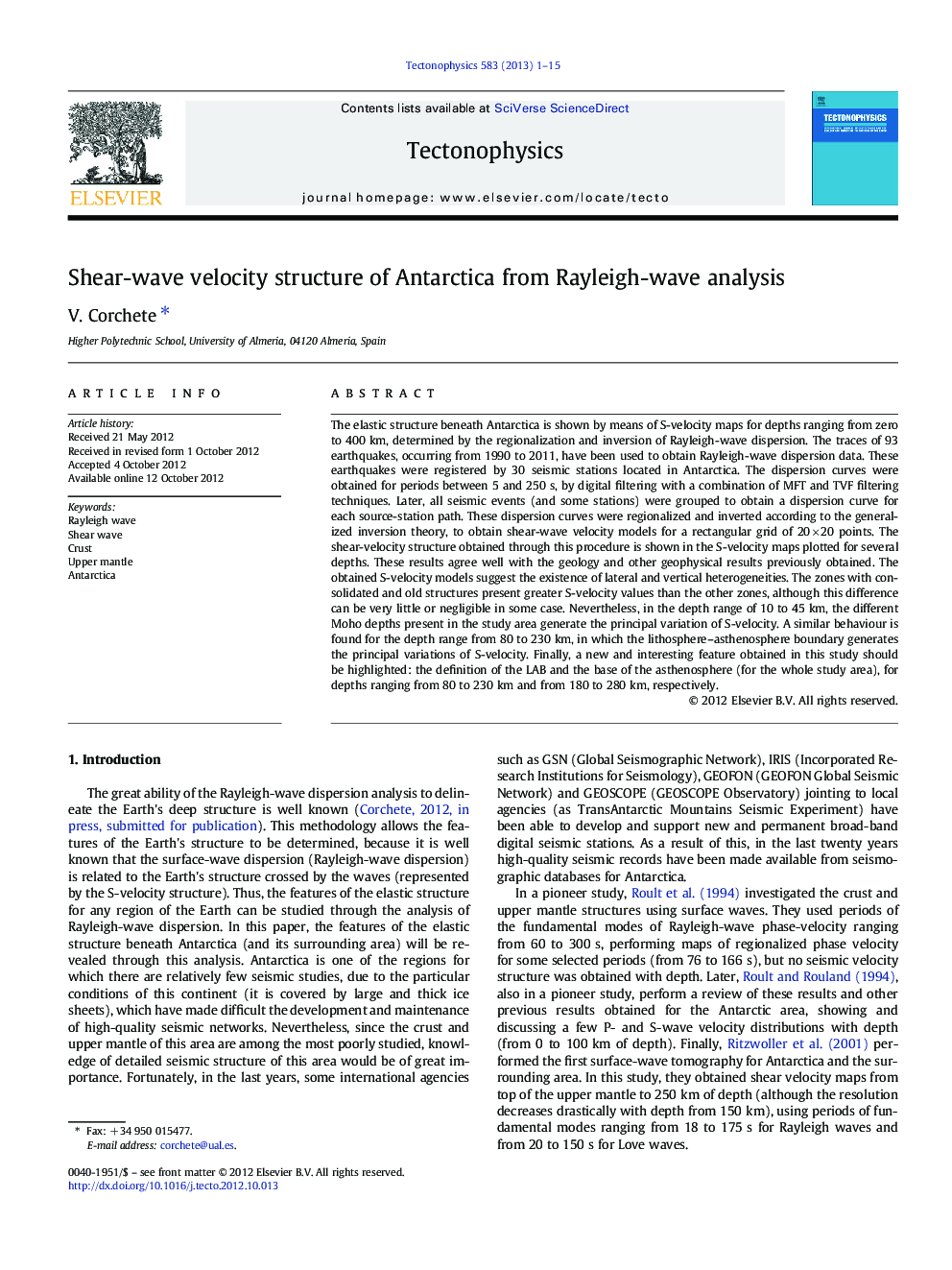| کد مقاله | کد نشریه | سال انتشار | مقاله انگلیسی | نسخه تمام متن |
|---|---|---|---|---|
| 6434163 | 1636802 | 2013 | 15 صفحه PDF | دانلود رایگان |

The elastic structure beneath Antarctica is shown by means of S-velocity maps for depths ranging from zero to 400Â km, determined by the regionalization and inversion of Rayleigh-wave dispersion. The traces of 93 earthquakes, occurring from 1990 to 2011, have been used to obtain Rayleigh-wave dispersion data. These earthquakes were registered by 30 seismic stations located in Antarctica. The dispersion curves were obtained for periods between 5 and 250Â s, by digital filtering with a combination of MFT and TVF filtering techniques. Later, all seismic events (and some stations) were grouped to obtain a dispersion curve for each source-station path. These dispersion curves were regionalized and inverted according to the generalized inversion theory, to obtain shear-wave velocity models for a rectangular grid of 20Â ÃÂ 20 points. The shear-velocity structure obtained through this procedure is shown in the S-velocity maps plotted for several depths. These results agree well with the geology and other geophysical results previously obtained. The obtained S-velocity models suggest the existence of lateral and vertical heterogeneities. The zones with consolidated and old structures present greater S-velocity values than the other zones, although this difference can be very little or negligible in some case. Nevertheless, in the depth range of 10 to 45Â km, the different Moho depths present in the study area generate the principal variation of S-velocity. A similar behaviour is found for the depth range from 80 to 230Â km, in which the lithosphere-asthenosphere boundary generates the principal variations of S-velocity. Finally, a new and interesting feature obtained in this study should be highlighted: the definition of the LAB and the base of the asthenosphere (for the whole study area), for depths ranging from 80 to 230Â km and from 180 to 280Â km, respectively.
⺠By means of this analysis, the principal structural features of Antarctica and its surrounding area have been revealed. ⺠The identification, in terms of S-velocity, of the principal units that compose Antarctica has been possible. ⺠The precise reconstruction of Gondwanaland is also possible, comparing the high and low velocity areas. ⺠A new feature obtained in this study is the definition of the LAB and the base of the asthenosphere.
Journal: Tectonophysics - Volume 583, 11 January 2013, Pages 1-15